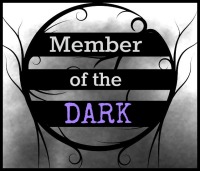The champions have had to deal with hidden enemies before. Luke Callindor face the shape-shifting Hellfire Elf in Beginning of a Hero. There was a traitor in Prodigy of Rainbow Tower. There was a lot of hidden danger in Sleeper of the Wildwood Fugue. The point here is that Charms of the Feykin falls into this category as well. That and I got to add a bunch of Amazon links to this post.
The truth is that most of the unknown enemies are known to the audience. I write scenes that focus on the villains to give hints of what they’re up to and evolve them. This allows the readers to get a feel for them and make sure that future events fit. Twists are good, but it helps to show the planning and enacting of the villain’s plan to clarify events. Basically, a very heavy-handed foreshadowing that sometimes come off as a megaphone. I try to have their discussion leave a few questions. For example, who is the target of the attack and where are the bad guys hiding?
The real mystery is for the heroes to figure stuff out and this can cause a little bit of confusion with readers. Ever watch a horror movie and yell at a character who goes to check the basement alone? We know about the danger and threat, but the characters remain unaware. This is a challenge that authors have very little control over because it relates to suspension of disbelief by the audience. It’s easier than we think too. All we have to do is acknowledge that the characters don’t know what we know and that’s part of the fun. It’s waiting to see when or if they figure out the secret.
So is there a difference with Charms of the Feykin? Yes. Unlike previous stories, the manipulation is so obvious that at least one hero knows something is off. They don’t know who the enemy is, but they’re aware that there is one. Even worse, the villain’s goal and next target is a mystery. Any hero can be turned or eliminated without warning, which can be nerve-wracking for the others. It brings another dynamic to this problem because the reader now gets a sense of a race against time. The champions no longer have ignorance on their side in this adventure. It isn’t as simple as making an unwitting mistake that works in the villain’s favor. Now, they’re fully aware that one wrong step can cost them a friend, so they’ll be acting with more caution than before.
I’m hoping this works and builds tension in the story. Working with the unknown is difficult for authors, readers, and characters. You need to find a balance and carefully choose what you’re going to reveal. This is probably why I went through this book more times than the last two. That would be Tribe of the Snow Tiger and The Mercenary Prince. Sorry. Couldn’t resist doing two more here.
So, what do you think about unknown dangers in fiction?






I think it’s wonderful. I have a living document with suspense techniques. What you’re describing is something Hitchcock spoke about. Show the bomb under the table. Then show the happy couple having lunch at the same table. Drag it out and make the audience sweat.
LikeLiked by 1 person
Hitchcock is definitely a master to examine for these things. I think I needed stuff like that a little more for the Raven stories than Windemere, but it comes up. I did have it that even when the enemy is revealed, a situation turns up that the discoverer is prevented from sharing.
LikeLiked by 1 person
I think suspense works everywhere. I find it much more gripping than gore.
LikeLike
Definitely. You’re aiming for two different reactions there. Gore is for grossing out while suspense is to keep you on the edge. There can be some overlap, but I do prefer the two to be used separately. Although, I admit to not being a big horror fan.
LikeLiked by 1 person
I think horror has shown everything it can at this point. They kind of became a place to see who could write the most disgusting thing possible. I much prefer suspense.
LikeLike
They should try to get back to the suspenseful thrillers. I think the genre is still stuck in the ‘found footage’ trick these days.
LikeLiked by 1 person
I agree with you. Many of the traditional horror authors are writing something other than horror these days. There is a lot of good suspenseful stuff in our arena though. John Howell, Sue Coletta, and Mae Clair come to mind.
LikeLike
Seems like a lot of stuff can be found in the indie scene. More risks and experiments to found there. 🙂
LikeLiked by 1 person
True.
LikeLike
I love hidden danger. It really livens up a story, and I totally agree you should drag it out as long as feasible: readers love to sit on the edge of the seat wondering what is about to happen.
LikeLike
Hope I pull that off. If not who the danger is, but what the secret is. This is why I have trouble writing mysteries. Too excited to reveal the surprise.
LikeLiked by 1 person
Creating tension in a reader or viewer is challenging, but fun. 🙂 So I guess that means we’ll be screaming at your characters, telling them, “Don’t go in there! Turn back!”
LikeLike
Maybe once or twice. Then again, who would really worry about some of them walking into a dark basement?
LikeLike
I think it is the tension that keeps and holds the reader’s attention. We all love to get a little tense when we are reading a good story.
LikeLike
Suspense is what can keep a novel going. 🙂
LikeLiked by 1 person
True enough.
LikeLike